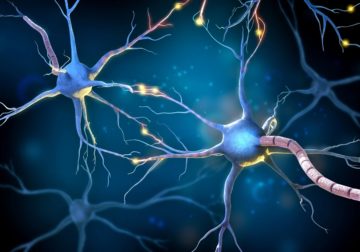Andy Carstens in The Scientist:
 In the 1950s, scientists on a mission to create better anesthesia drugs synthesized phencyclidine, commonly known as PCP. Though PCP worked well to keep most people unconscious during surgical procedures, some experienced what the authors of a 1959 trial described as “delirium and hallucinations which, although usually of a highly pleasurable nature, are sometimes rather terrifying to the patients.” This so-called dissociated state—when what the brain experiences is disconnected from reality—lasted as long as 12 hours.
In the 1950s, scientists on a mission to create better anesthesia drugs synthesized phencyclidine, commonly known as PCP. Though PCP worked well to keep most people unconscious during surgical procedures, some experienced what the authors of a 1959 trial described as “delirium and hallucinations which, although usually of a highly pleasurable nature, are sometimes rather terrifying to the patients.” This so-called dissociated state—when what the brain experiences is disconnected from reality—lasted as long as 12 hours.
Seeking a shorter-acting agent, researchers in the 1960s made a compound that’s structurally related to PCP called ketamine. Ketamine remains a common anesthetic today, says Joe Cichon, a neuroscientist and anesthesiologist at the University of Pennsylvania’s Perelman School of Medicine. At lower doses than would be used for anesthesia, people remain conscious yet experience a similar dissociated state as with PCP but for far less time. In the 2000s, researchers found that these lower, so-called subhypnotic doses of ketamine have an antidepressant effect that can last for several weeks, well after the body has metabolized the drug, Cichon says. “And still to this day, after 60 years of being available for human use . . . we still don’t quite understand how it exerts all these different effects over a wide range of doses—that’s the mystery of ketamine.”
Now, Cichon and his colleagues have uncovered a new clue: By using calcium photon imaging, they found that the drug flips a “switch” in mice brains, shutting off neurons that had been firing in the awake state while activating a separate group of previously dormant neurons.
More here.
